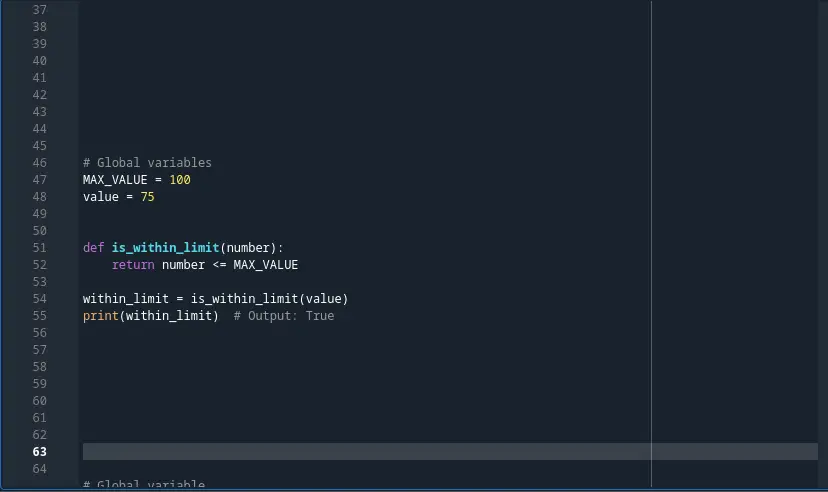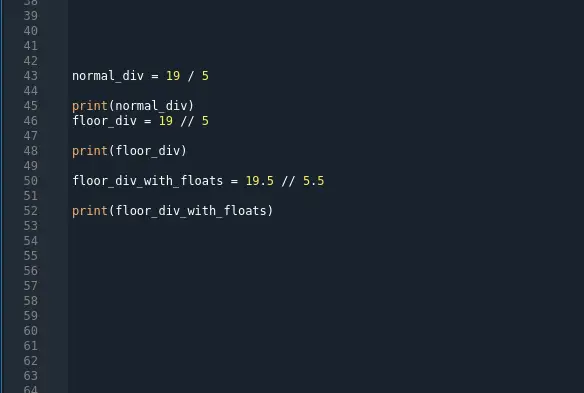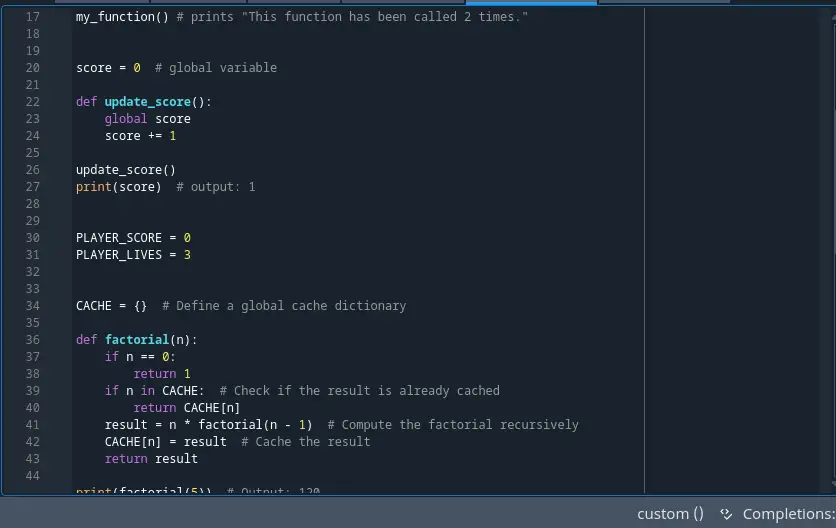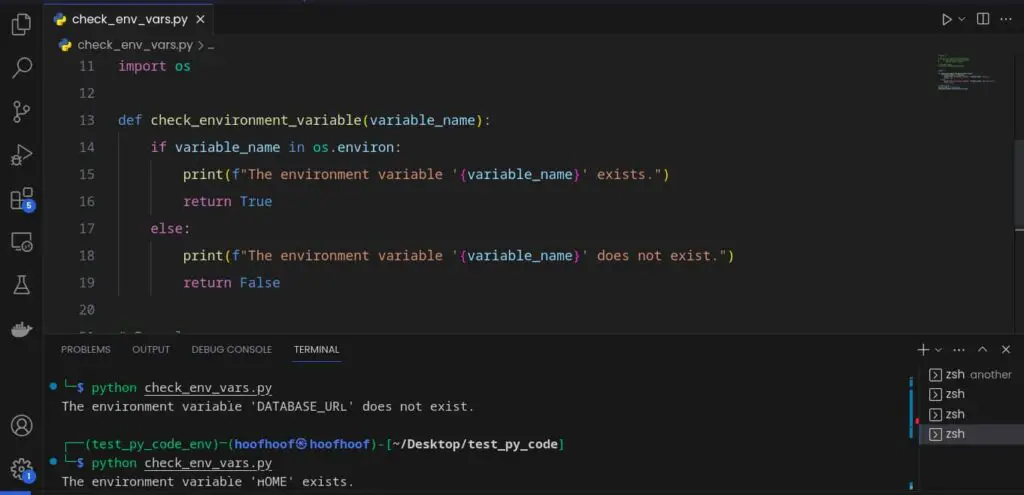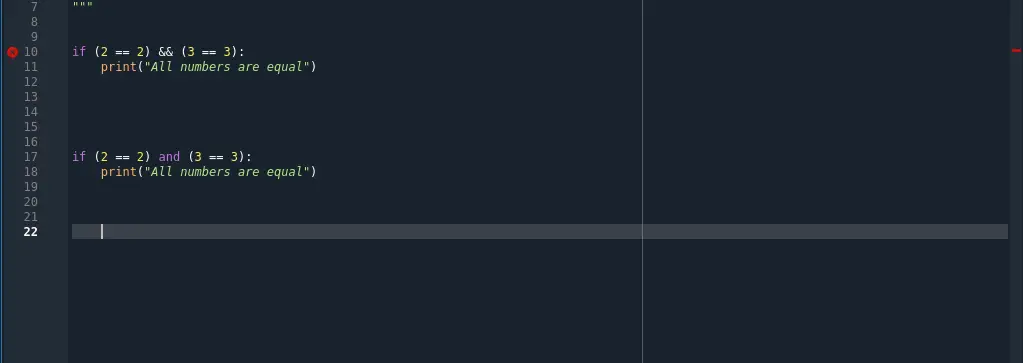Have you ever found yourself writing a Python function that needs to return multiple values?
Perhaps you needed to return both the maximum and minimum values from a list, or the results of a complex calculation.
In these situations, it can be tempting to write multiple functions to handle each output separately. However, this can quickly become cumbersome and difficult to manage.
Luckily, Python offers a variety of techniques to return multiple values from a single function, making it easy to handle complex programs with ease.
By leveraging these techniques, you can simplify your code, reduce the number of functions needed, and make your programs more efficient overall.
Python provides features that can be incredibly useful when working with complex programs that require multiple outputs or when you want to reduce the number of functions used in a program.
In this article, we will explore the different techniques available to return multiple values from a Python function, along with examples of how to implement them in your code.
Different ways to return multiple values from a Python function
There are several ways to return multiple values from a Python function.
The most common methods are using a tuple, list, dictionary, or namedtuple to pack and return multiple values as a single object.
Tuples and lists are the simplest to implement and allow for easy access to individual elements using indexing.
Dictionaries provide the added benefit of accessing values by a unique key, while namedtuples can provide a more structured way of accessing returned values.
Additionally, Python allows for the use of the * operator to unpack sequences of values into separate variables, providing another way to return multiple values.
How to return multiple values using a tuple from a Python function
Tuples are one of the most versatile and powerful data structures in Python. They can hold a collection of values, which makes them ideal for returning multiple values from a single function.
Here is a step-by-step process:
Step 1: Create a tuple with the values you want to return
To return multiple values using a tuple, the first step is to create a tuple that contains the values you want to return.
For example, if you want to return two values – the maximum and minimum value of a list – you can create a tuple like this:
result = (max_value, min_value)Step 2: Return the tuple from the function
Once you have created the tuple, you can return it from the function using the return statement.
For example, a function that finds the maximum and minimum value of a list and returns them as a tuple could look like this:
def find_max_min(input_list):
max_value = max(input_list)
min_value = min(input_list)
result = (max_value, min_value)
return result
max_num = find_max_min([2, 20, 78])
print(max_num)In this example, the first number, which is the largest should be printed first before the min number.
Step 3: Unpack the tuple when calling the function
To access the values returned by the function, you can assign the returned tuple to a variable and then access the individual values using indexing.
For example, to find the maximum and minimum value of a list, you can call the find_max_min() function and unpack the returned tuple like this:
my_list = [1, 2, 3, 4, 5]
max_value, min_value = find_max_min(my_list)
print("Max value:", max_value)
print("Min value:", min_value)
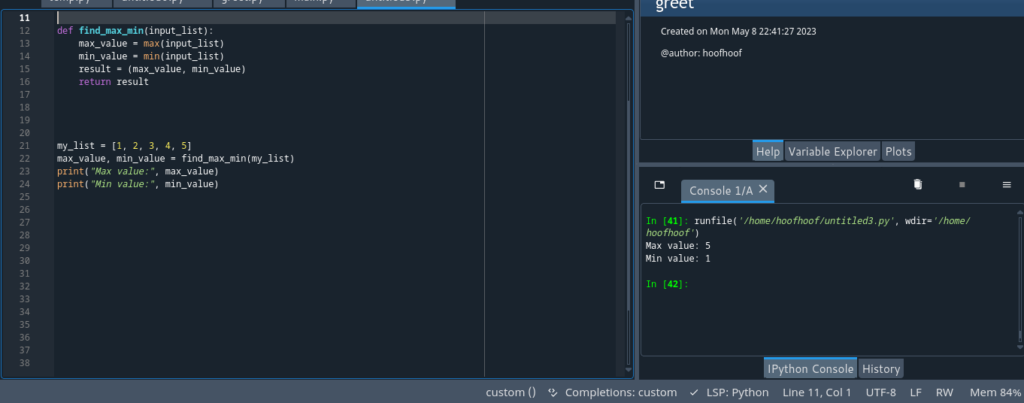
Using tuples to return multiple values from a Python function is a straightforward and efficient approach.
Tuples offer several advantages, such as immutability and easy indexing, making them a great choice for returning multiple values.
By following the steps outlined above, you can easily use tuples to handle complex programs and improve the overall efficiency of your code.
Return multiple values from a function using a list
Using a list to return multiple values from a Python function is another powerful technique that can simplify your code and make it more efficient. This technique can be particularly useful when you need to return a variable number of values, or when you want to simplify your code by reducing the number of functions needed.
Here is a step-by-step process of returning multiple values from a function using a list:
Step 1: Define the function with input parameters to be returned
Inside the function, create an empty list to store the values that will be returned.
def my_function(value1, value2):
return_list = []
Step 2: Add the values you wish to return to the list using .append() method
For example, if you want to return two values, you would add them to the list like this:
def my_function(value1, value2):
return_list = []
return_list.append(value1)
return_list.append(value2)
Step 3: Return the list from the function using the return statement
def my_function(value1, value2):
return_list = []
return_list.append(value1)
return_list.append(value2)
return return_list
Step 4: Call the function and store the returned list in a variable
my_list = my_function('Something', "Another thing")
Step 5: Access the values in the returned list using the index of each value:
value1 = my_list[0]
value2 = my_list[1]
print(value1)As easy as that!
Here’s an example function that uses this approach to return the sum and product of two numbers:
def sum_and_product(num1, num2):
result_list = []
result_list.append(num1 + num2)
result_list.append(num1 * num2)
return result_list
You can call this function and get the values like this:
result = sum_and_product(2, 3)
sum_value = result[0]
product_value = result[1]
print(sum_value) # Output: 5
print(product_value) # Output: 6
Alternatively, you can directly unpack the returned list into multiple variables when calling the function, using the syntax var1, var2, ... = function_name(arguments).
For example:
sum_value, product_value = sum_and_product(2, 3)
print(sum_value) # Output: 5
print(product_value) # Output: 6
This approach can be useful when you have a function that returns a large number of values and you want to avoid cluttering your code with a lot of list indexing.
Just keep in mind that the number of variables used to unpack the list must match the number of items in the list.
Using a dictionary to return multiple values from a Python function
In Python, a dictionary is a powerful data structure that allows you to store and retrieve key-value pairs efficiently.
When you want to return multiple values from a function, you can use a dictionary to store all the values and then return that dictionary.
To use a dictionary to return multiple values from a Python function, you first need to create a dictionary with the key-value pairs that you want to return.
For example, suppose you want to return the name, age, and occupation of a person. You can create a dictionary like this:
person = {
"name": "Steve",
"age": 30,
"occupation": "Software Developer"
}
Next, you can return this dictionary from your function using the return statement:
def get_person():
person = {
"name": "Steve",
"age": 30,
"occupation": "Software Developer"
}
return person
Now, when you call the get_person() function, it will return the entire dictionary with all the key-value pairs:
person = get_person()
print(person)
To access a specific value from the dictionary, you can use the key as an index:
person = get_person()
name = person["name"]
age = person["age"]
occupation = person["occupation"]
In this way, you can use a dictionary to return multiple values from a Python function.
Using Namedtuple to return multiple values
In Python, the namedtuple function from the collections module provides a simple and efficient way to define a class for creating lightweight objects with named attributes.
Named tuples are essentially tuples that have named fields, making them more readable and self-documenting than regular tuples.
They can be used to represent simple, immutable data structures, and are particularly useful when you need to return multiple values from a function.
When you use a namedtuple to return multiple values, you are essentially creating a new class that represents the result of the function.
The named fields of the namedtuple correspond to the individual values that the function is returning.
This makes it easy to access the individual values using dot notation, rather than having to remember the position of each value in a regular tuple.
Here’s an example to illustrate this concept.
Let’s say you have a function that calculates the area and perimeter of a rectangle, given its length and width:
from collections import namedtuple
def calculate_rectangle(length, width):
area = length * width
perimeter = 2 * (length + width)
return namedtuple('Rectangle', ['area', 'perimeter'])(area, perimeter)
In this example, the calculate_rectangle function takes two parameters, length and width, and calculates the area and perimeter of a rectangle using those values. The function then returns a namedtuple object that represents the result, with two named fields, area and perimeter.
You can then use the function like this:
rectangle = calculate_rectangle(4, 6)
print(rectangle.area) # Output: 24
print(rectangle.perimeter) # Output: 20

In this example, we call the calculate_rectangle function with length 4 and width 6. The function returns a namedtuple object that we assign to the rectangle variable. We can then access the individual values of the result using dot notation, like rectangle.area and rectangle.perimeter.
Using a namedtuple to return multiple values is a clean and efficient way to create lightweight objects with named attributes.
It makes the code more readable and self-documenting, and can help avoid errors that can arise from using regular tuples.
How to return multiple values in a function using unpacking operator
The unpacking operator * can be used to unpack a collection of values into individual values. When used in a function call, it can be used to pass a collection of values as separate arguments to a function.
Similarly, when used in a function definition, it can be used to receive a collection of values as separate arguments.
To return multiple values from a function using the unpacking operator, you can create a collection of values in the function, such as a tuple or a list, and then unpack it using the * operator in the return statement.
Here is an example:
def get_info():
name = "Steve"
age = 30
address = "123 Main St."
return name, age, address
info = get_info()
print(info) # Output: ("John", 30, "123 Main St.")
In this example, the get_info function returns three values: name, age, and address. These values are packed into a tuple using the comma notation in the return statement.
When the get_info function is called, the tuple is returned and assigned to the info variable using unpacking. The resulting info variable contains three separate values.
Best Practices for returning multiple values from a Python function
Here are some best practices for returning multiple values from a function in Python:
1. Use meaningful data structure
When returning multiple values from a function, it is important to choose a data structure that is appropriate for the data being returned.
For example, if you are returning a list of strings, you may choose to use a list. If you are returning a dictionary with keys and values, you may choose to use a dictionary.
It is best to use a data structure that makes the most sense for your specific use case.
For example, imagine you are building a program that stores information about books.
You may want to create a function that returns the title, author, and publication date of a book.
In this case, it may be best to use a dictionary to store this information, as it allows you to easily access the individual pieces of information using the keys.
def get_book_info(): title = "To Kill a Mockingbird" author = "Harper Lee" publication_date = "July 11, 1960" return {"title": title, "author": author, "publication_date": publication_date}
2. Use unpacking to unpack the multiple values
As mentioned earlier, the unpacking operator * can be used to extract the values from a collection of data. Using unpacking can make it easier to work with the data returned by a function.
3. Document the return values using docstrings or function annotations
It is important to document the values returned by a function so that others who use the function can understand what the function does and what values it returns.
This can be done by adding a docstring or annotations to the function.
Docstrings are a way to document your code within your source file. A docstring is a string literal that appears as the first statement in a module, class, or function definition.
Docstrings are enclosed in triple quotes and provide a way to describe what a function does, its parameters, and its return values.
Here’s an example of using a docstring to document the return values of a function:
def add_numbers(num1, num2):
"""
Add two numbers together and return the result.
Parameters:
num1 (int): The first number to be added.
num2 (int): The second number to be added.
Returns:
int: The sum of num1 and num2.
"""
return num1 + num2
In this example, the docstring provides a description of what the function does, its parameters, and its return value. This information can be helpful for someone who is using the function.
Function annotations are a way to attach metadata to function parameters and return values. Function annotations are specified using a colon followed by the annotation after the parameter or return value.
Here’s an example of using function annotations to document the return values of a function:
def add_numbers(num1: int, num2: int) -> int:
"""
Add two numbers together and return the result.
"""
return num1 + num2
In this example, the function annotations specify that the parameters num1 and num2 should be integers and that the return value should be an integer. These annotations can help make the code more self-documenting.
FAQs
How to access multiple values returned from a Python function using for loop
In Python, it is possible to return multiple values from a function using tuples, lists, or dictionaries. To access these multiple values, you can use a for loop in conjunction with tuple unpacking.
Here’s how:
- Define a function that returns multiple values, such as a tuple, list, or dictionary.
- In the for loop, call the function that returns the multiple values.
- Assign the returned values to a single variable using tuple unpacking or a single variable if the return value is a list or dictionary.
- Use the for loop to iterate over the values.
- Perform any desired operations on each value inside the loop.
Here’s an example of how to use a for loop to access multiple values returned from a function:
def get_student_data():
name = "Steve"
age = 20
grade = "A"
return name, age, grade
for data in get_student_data():
print(data)In this example, the get_student_data function returns a tuple containing the student’s name, age, and grade. The for loop then iterates over this tuple and assigns each value to the variable data. The print statement then prints each value in the tuple.
Conclusion
In conclusion, returning multiple values from a Python function can be a powerful tool to simplify your code and make it more efficient.
Whether you choose to use tuples, lists, dictionaries, namedtuples, or the unpacking operator, each technique offers its own unique advantages and use cases.
By choosing the right approach for your specific needs, you can make your code more readable, maintainable, and flexible.
With the step-by-step processes outlined in this article, you can quickly become proficient in using each of these techniques and take your Python programming skills to the next level.
So go forth and experiment with returning multiple values from your functions, and see how it can make your code more powerful and streamlined.


